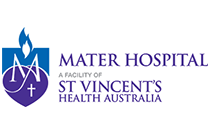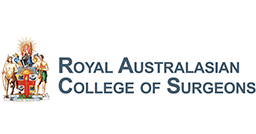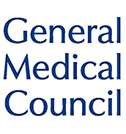Total Knee Replacement
What is Arthritis?
The knee is made up of the femur (thighbone), the tibia (shinbone), and patella (kneecap). The surfaces between the bones is covered with special cartilage called ARTICULAR CARTILAGE. It allows the joints to move smoothly over each other. The meniscus, the rubber like cartilage structure between the femur and tibia, serves as a cushion and helps absorb shock during motion. Arthritis is damage to the protective layer of articular cartilage and causes pain and difficulty in performing daily activities. Osteoarthritis is a wear-and-tear type of arthritis. Other causes of arthritis are discussed below.
Causes of Osteoarthritis
The exact cause of osteoarthritis is not known, however, there are several factors that are commonly associated with the onset of arthritis and may include:
- Injury or trauma to the joint
- Fractures at the knee joint
- Increased body weight
- Repetitive overuse
- Joint infection
- Inflammation of the joint
- Connective tissue disorders
Diagnosis of Osteoarthritis
Your doctor will diagnose osteoarthritis based on the medical history, physical examination, and X-rays.
X-rays typically show a narrowing of the joint space in the arthritic knee.
What is Total Knee Replacement?
Total knee replacement, also called total knee arthroplasty, is a surgical procedure in which the worn out or damaged surfaces of the knee joint are removed and replaced with artificial parts.
Indications for Total Knee Replacement
Total knee replacement surgery is commonly indicated for severe osteoarthritis of the knee. Osteoarthritis is the most common form of knee arthritis in which the joint cartilage gradually wears away. It often affects older people.
In a normal joint, articular cartilage allows for smooth movement within the joint, whereas in an arthritic knee, the cartilage itself becomes thinner or completely absent. In addition, the bones become thicker around the edges of the joint and may form bony “spurs”. These factors can cause pain and restrict range of motion in the joint.
Your doctor may advise total knee replacement if you have:
- Severe knee pain which limits your daily activities (such as walking, getting up from a chair or climbing stairs).
- Moderate to severe pain that occurs during rest or awakens you at night.
- Chronic knee inflammation and swelling that is not relieved with rest or medications
- Failure to obtain pain relief from medications, injections, physical therapy, or other conservative treatments.
- A bow- legged knee deformity
Total Knee Replacement Procedure
The goal of total knee replacement surgery is to relieve pain and restore the alignment and function of your knee.
The surgery is performed under spinal or general anesthesia. Your surgeon will make an incision in the skin over the affected knee to expose the knee joint. Then, the damaged portions of the femur are cut at appropriate angles using specialized jigs. The new metal femoral component is attached to the end of the femur with specialised bone cement or may be ‘Press-Fit’ if the bone is very strong.
The surgeon then removes the damaged area of the top of the tibia (shinbone) and the cartilage. This creates a smooth surface onto which the implants can be attached. Next, the new titanium tibial component is secured to the bone with bone cement or may be press-fit in strong bone.
The knee is tested for stability and range of motion and
A specialised plastic piece called a liner creates the surface between the implants to provide a smooth gliding surface for movement. This plastic insert will support the body’s weight and allow the femur to move over the tibia, like the original joint surface.
The femur and the tibia with the new components are then put together to form the new knee joint.
To make sure the patella (kneecap) glides smoothly over the new artificial knee, its rear surface is also prepared and a plastic component is cemented into place.
With all the new components in place, the knee joint is tested through its range of motion. Local anaesthetic is infiltrated throughout the tissues around the joint and the entire joint is then irrigated and cleaned with a sterile solution. The incision is carefully closed. Dr Thornton-Bott always uses a dissolvable stitch in his skin closure. A sterile dressing is placed over the incision.
Postoperative Care Following Total Knee Replacement
Rehabilitation begins immediately following the surgery. A physical therapist will teach you specific exercises to strengthen your leg and restore knee movement. You will be able to walk with crutches or a walker and will quickly progress to walking sticks. Your physical therapist will also provide you with a home exercise program to strengthen thigh and calf muscles.
You will need to wear stockings on your calves for 6 weeks and take a blood thinner such as Aspirin to reduce the risk of blood clots, or deep venous thrombosis (DVT).
Risks and Complications of Total Knee Replacement
As with any major surgery, possible risks and complications associated with total knee replacement surgery include:
- Knee stiffness
- Infection
- Blood clots (deep vein thrombosis)
- Nerve and blood vessel damage
- Ligament injuries
- Patella (kneecap) dislocation
- Plastic liner wearing out
- Loosening of the implant
If you find it difficult to perform simple activities such as walking or climbing stairs because of your severe arthritic knee pain, then total knee replacement may be an option for you. It is a safe and effective procedure to relieve pain, correct leg deformity, and help you resume your normal activities of daily living.













